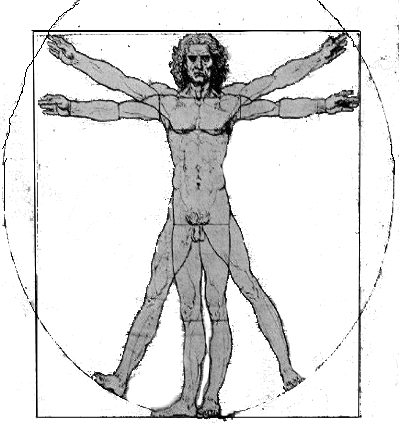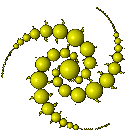
Art

and the Golden Ratio
![]()
The Golden Rectangle is said to be one of the most visually satisfying of all geometric forms.� For years, experts have been finding examples in everything from the facades of ancient Greece to art masterpieces. In recent times, the validity of its link with beauty has been widely debated.
Piet Mondrian and Leonardo da Vinci both thought that art should manifest
itself in continuous movement and beauty. Therefore, they both expressed movement by
incorporating the golden rectangle into their paintings. The golden ratio expresses
movement because it keeps on spiraling to infinity. They showed beauty in their paintings
by using the golden ratio because it is pleasing to
the eye.� To express the Fibonacci Sequence in art one must pay close attention to
beauty, proportions, and continuous rhythm.
![]()
Leonardo Da Vinci
Piet Mondrian
![]()
Conclusion: Composition in 2A

This is a Mondrian-like painting, drawn in Paint and edited in Paint Shop Pro.� It symbolizes Ms. Cerreta's classroom.
Some of the shapes in this painting are proportional to the golden rectangle, while others aren't, such as the square and the rectangle in the up right hand corner.� The other shapes are proportional to the golden rectangle.� These shapes are much more pleasing to the eye.� The series of rectangles on the bottom of the picture are decreasing golden rectangles and the golden spiral can be drawn in them. The rectangle sequence at the bottom of the picture uses colors that Mondrian would have used, while the rectangles at the top use un-Mondrian colors.� As can be plainly seen, Mondrian's color scheme is much more pleasing to the eye. It can be seen by this example that Mondrian's style is more pleasing to the eye than simply placing random rectangles with odd colors on a piece of paper.�
![]()
 Return to the Golden Ratio Page
Return to the Golden Ratio Page
�